Finding a door that fits a minimalist design without bulky hardware is tough. This can disrupt the clean lines you want. Ghost doors offer a seamless, modern solution.
A ghost door in interior design is a hidden track sliding door. Its hardware is completely concealed, making the door look like it’s floating or part of the wall. This creates a super clean, minimalist feel perfect for modern spaces and saving valuable floor space.
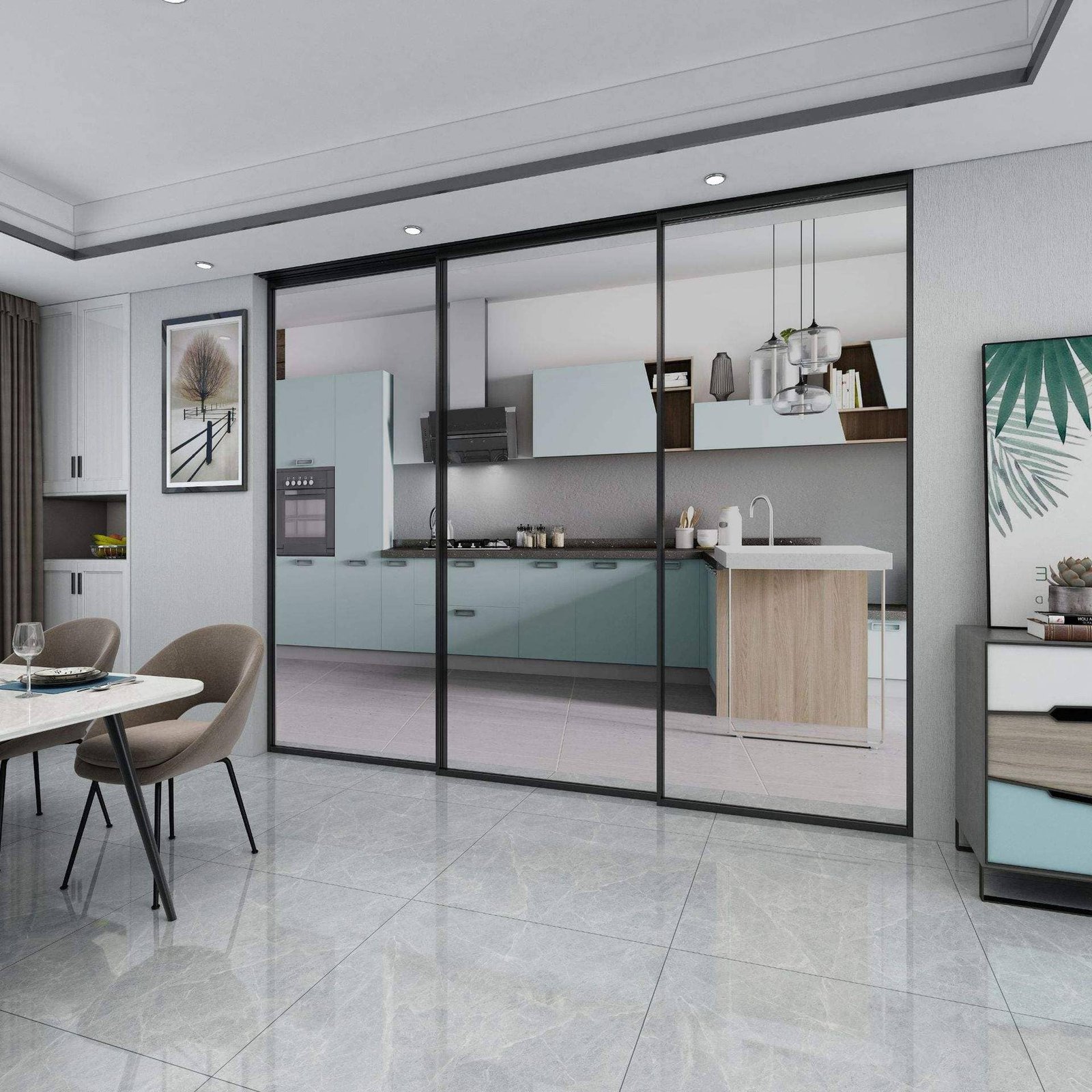
I’ve seen ghost doors transform a room from ordinary to stunning. They really have a unique magic. But behind that magic is some clever engineering that sets them apart from the doors you see every day. Let’s look closer at what makes them so special and how they work.
What is a ghost door?
You want a door that disappears into the wall for a seamless look. But ugly tracks and frames always get in the way. Ghost doors solve this by concealing everything.
A ghost door is a sliding door system where the track and rollers are completely hidden from view. Usually, the track is recessed into the wall or ceiling. This creates the illusion that the door panel is floating, blending perfectly with its surroundings for supreme minimalism.
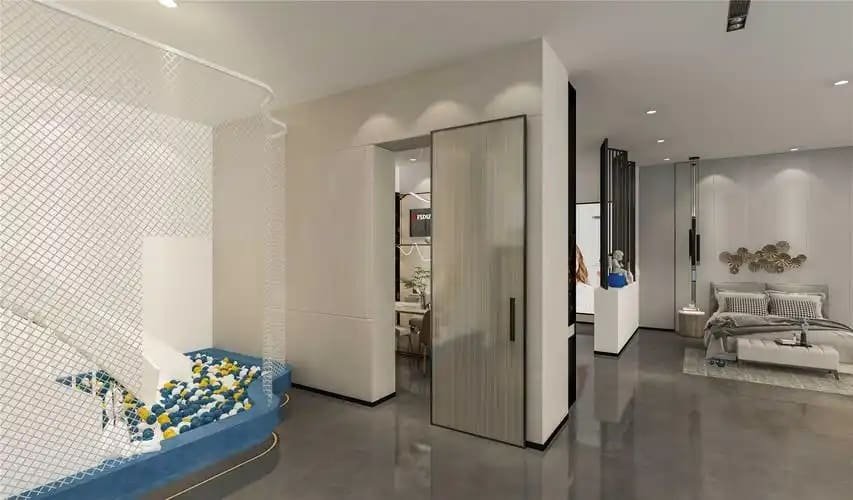
The "ghost" effect comes from how we hide the hardware. It’s not magic, just smart design. There are a few key parts that we at opensliding focus on to make this happen for our clients, who are often door factories or contractors.
The Concealed Track
The main part is the track. Unlike a barn door where the track is a feature, here it’s hidden. Most often, it’s a recessed aluminum profile1 installed inside the top of the door frame or even in the ceiling before the drywall goes up. This takes careful planning during the construction phase, which is a key conversation I have with my B2B customers. They need the hardware specs early.
The Roller Mechanism
The rollers are also special. They are designed to fit inside the track and attach to the top edge of the door panel itself. This means you don’t see any hangers on the face of the door. As a manufacturer, we focus on making these rollers incredibly smooth and quiet, because any noise would spoil the illusion. We use high-quality bearings to ensure a silent glide for years. My clients know their reputation depends on small details like this.
How do ghost doors differ from regular doors?
Deciding on the right door type is critical for a project’s flow. Making the wrong choice can waste space and ruin the design. Knowing the key differences is essential.
Ghost doors differ from regular doors mainly in their hardware and space usage. They use hidden tracks to save floor space and create a seamless look. Regular hinged doors need swing space, and traditional sliding doors have visible tracks. Ghost doors require more complex installation but offer superior aesthetics.
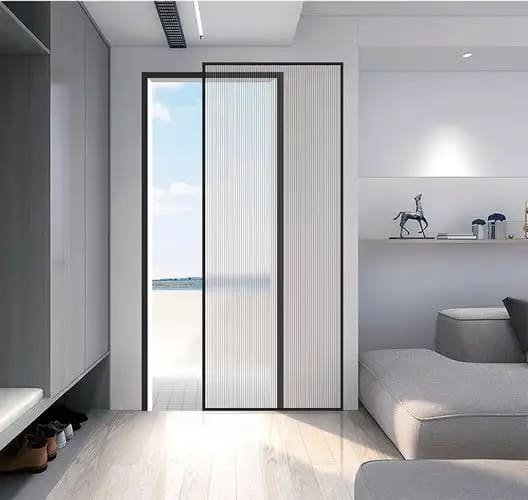
From a technical and practical standpoint, the differences are huge. I talk to contractors and purchasing managers like Jacky about this all the time. It’s not just about looks; it’s about function and installation planning. Let’s break it down in a simple table.
| Feature | Ghost Door | Regular Hinged Door |
|---|---|---|
| Hardware | Concealed in wall/ceiling | Visible hinges, frame |
| Space Usage | Zero swing space | Requires clear swing arc |
| Aesthetics | Minimalist, seamless | Traditional, defines space |
| Installation | Complex, requires planning | Simpler, standard framing |
| Cost | Higher initial cost | Lower initial cost |
Hardware and Installation
As you can see, the biggest difference for us as hardware suppliers is the hardware itself. For ghost doors2, everything—the aluminum rail, the soft-close rollers, the guides—must be precision-engineered to be hidden. This means the installation must be done early in the building process. You can’t just decide to add a ghost door to a finished wall easily. For our B2B clients, this planning is key. They need the hardware specs3 from us way ahead of time. Regular doors are much more forgiving; you can install them at the end of a project. This difference in planning and complexity naturally affects the overall cost of the project.
How to stop a ghosting door?
A door that won’t stay put is a big problem. This ‘ghosting’ feels unprofessional and frustrates end-users. Luckily, the fix is often simple if the installation was done right.
To stop a ghosting door—a door that moves on its own—you must ensure the track is perfectly level. Ghosting is almost always caused by an unlevel track. Using a level, check the track and adjust it with shims until it is completely flat. This removes the gravitational pull.
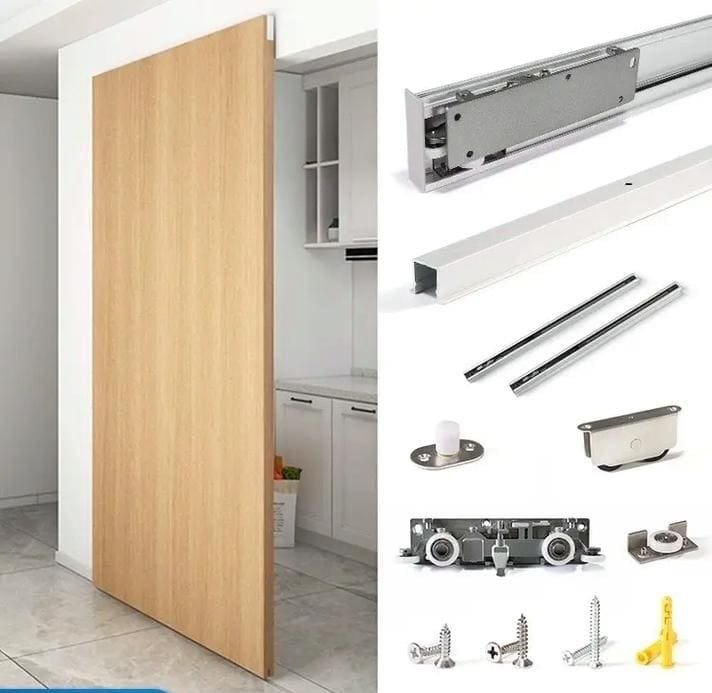
This problem of "ghosting" is something I get asked about by installers. A door, whether it’s a sliding ghost door or a regular hinged door, should only move when you push it. If it moves by itself, gravity is the culprit. This means the frame or track is not perfectly plumb or level.
The Root Cause: Gravity
It’s simple physics. If the sliding track has even a tiny slope, the door will want to roll to the lowest point. For our precision rollers at opensliding, the movement is so smooth that even a 1mm drop over the length of the track can be enough to make the door drift. This is why the installation phase is so critical.
A Professional’s Checklist for Fixing Ghosting
- Check for Level4: Place a carpenter’s level on top of the door itself, since accessing the track is hard. Check it when the door is open, closed, and halfway.
- Identify the Low Side: The bubble in the level will move toward the higher side. The door will be rolling to the low side.
- Adjust the Track5: This is the hard part for a ghost door since it’s concealed. The best way is to address it during installation. If it’s post-installation, you may need to remove trim to access the track’s fasteners. Loosen them and insert shims on the low side until the track is perfectly level.
- Check Hardware Quality: Low-quality rollers can also contribute to uneven movement. Always use a reliable system from a trusted factory like ours to prevent these issues from the start.
How do ghost sliding doors work?
Ghost doors look like they float by magic, which can be intimidating. This makes specifying them for a project feel like a risk. The mechanism is actually quite simple and reliable.
Ghost sliding doors work using a track concealed within the wall or ceiling. Rollers attached to the top of the door run inside this hidden track. A small, discreet guide on the floor keeps the door stable and prevents it from swinging, creating a smooth, floating glide.
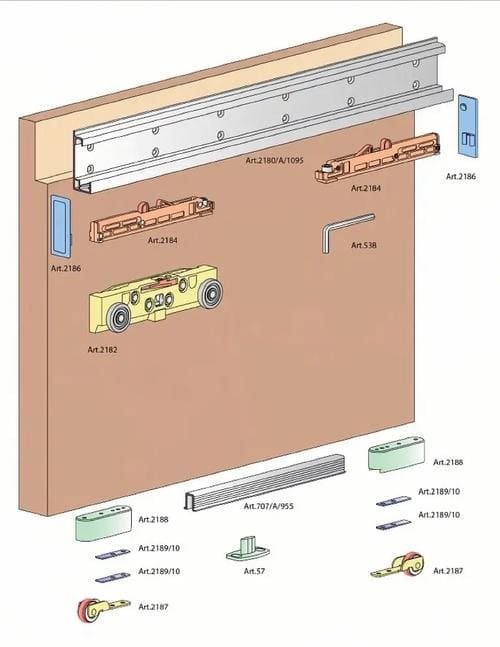
As a manufacturer, the "how" is my favorite part. It’s where our engineering shines. The entire system is designed for invisibility and smooth operation. Let’s look at the core components that make it all happen.
1. The Concealed Track
This is the backbone. It’s usually an aluminum extrusion that gets mounted into the wall framing before drywall. It has to be incredibly strong and straight to support the door’s weight without sagging over time. We supply different profiles for different wall thicknesses and weight capacities, up to heavy-duty models for large wooden doors.
2. The Roller Carriage and Soft-Close
This is the heart of the system. The roller carriage6 is inserted into the track and connects to a mounting plate on the top of the door. Our systems at opensliding often include integrated soft-close mechanisms7. A small piston-like damper inside the track catches the door in the last few inches of travel, pulling it shut gently and quietly. This is a premium feature our clients in high-end furniture and construction demand.
3. The Floor Guide
Since the door is only supported from the top, it needs something to keep it from swaying. A small, almost invisible pin or T-guide is fixed to the floor. A groove is routed into the bottom of the door panel, which slides over this guide. It ensures the door travels perfectly straight.
Conclusion
Ghost doors offer a stunning minimalist aesthetic by hiding hardware. Understanding how they work is key to choosing the right system and ensuring a perfect, long-lasting installation for any project.
Explore this link to understand how recessed aluminum profiles enhance design and functionality in modern construction. ↩
Explore this link to understand the unique features and installation process of ghost doors, crucial for effective planning. ↩
Learn why having accurate hardware specs is vital for project success, ensuring timely and efficient installations. ↩
Understanding how to check for level is crucial for ensuring your sliding door operates smoothly and prevents ghosting. ↩
Learning the correct way to adjust the track can save you time and frustration, ensuring your door functions perfectly. ↩
Understanding the roller carriage is essential for ensuring smooth operation and durability in sliding door systems. ↩
Explore how soft-close mechanisms enhance user experience by providing quiet and gentle door closure. ↩

